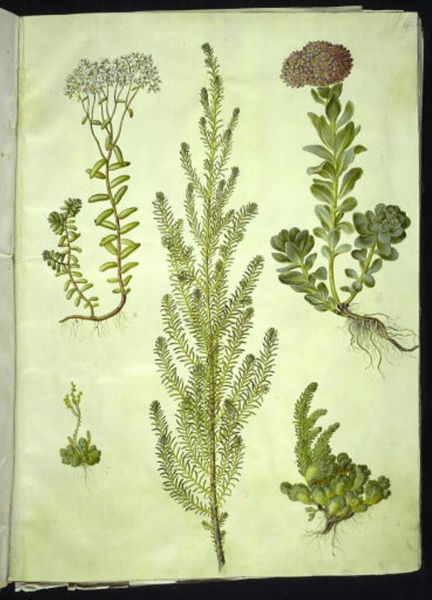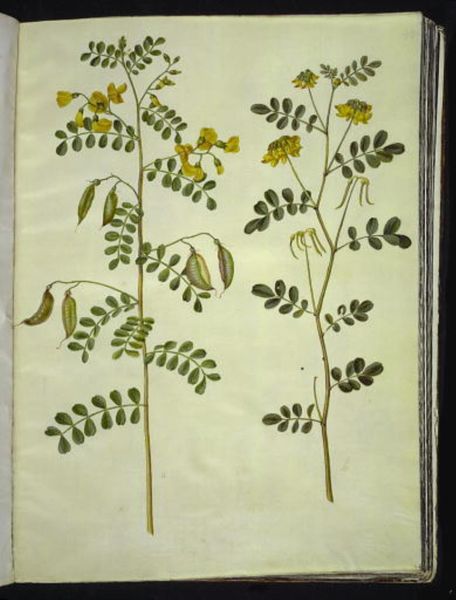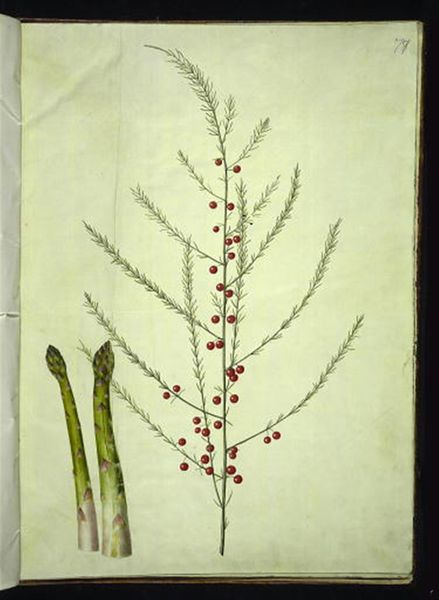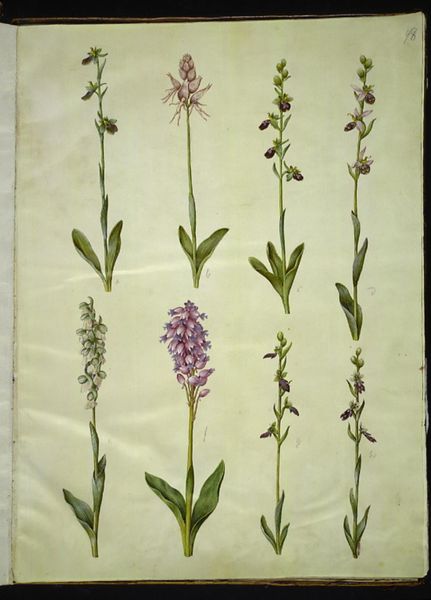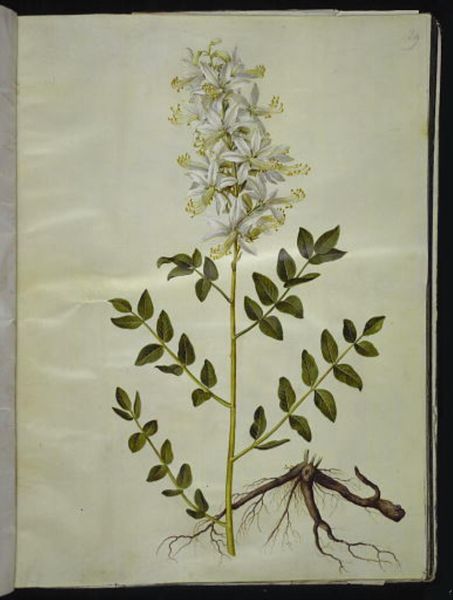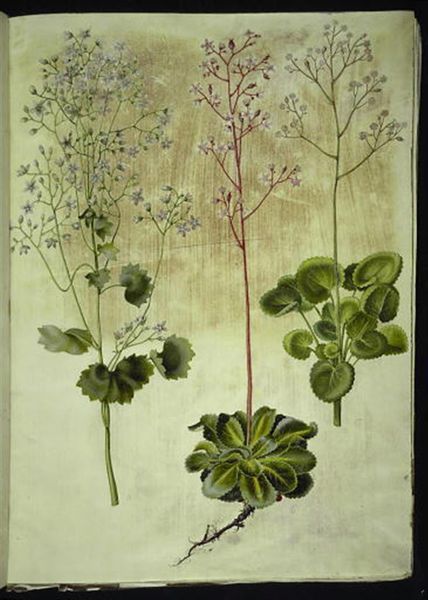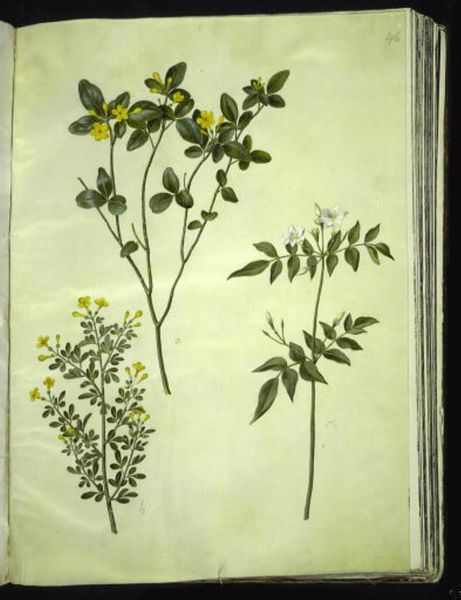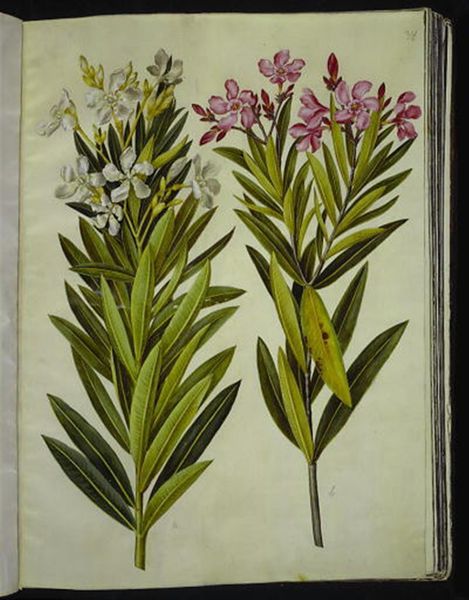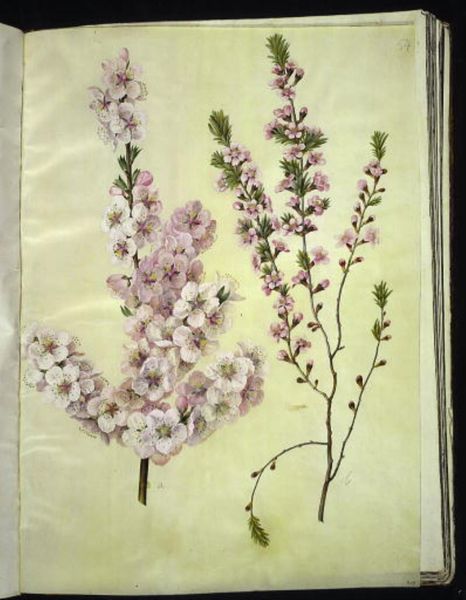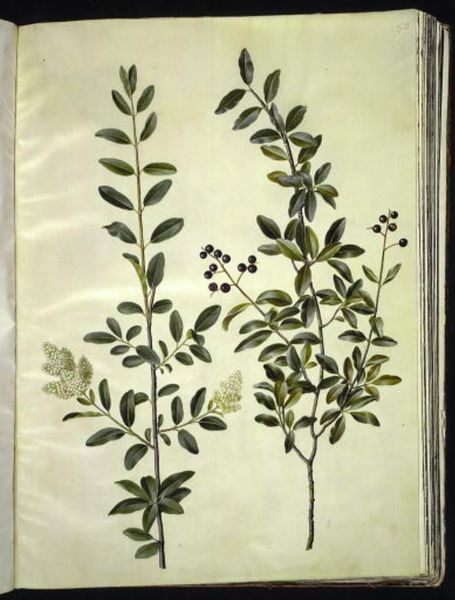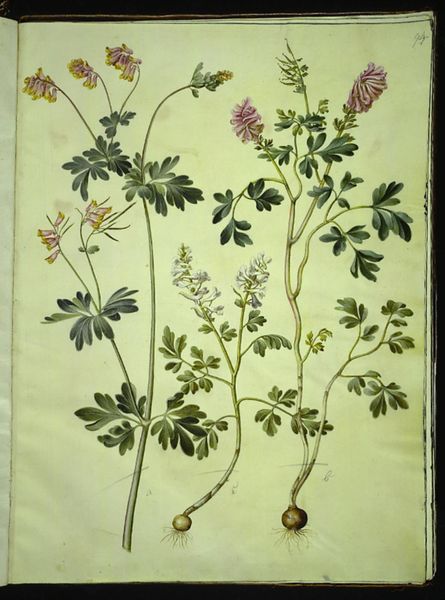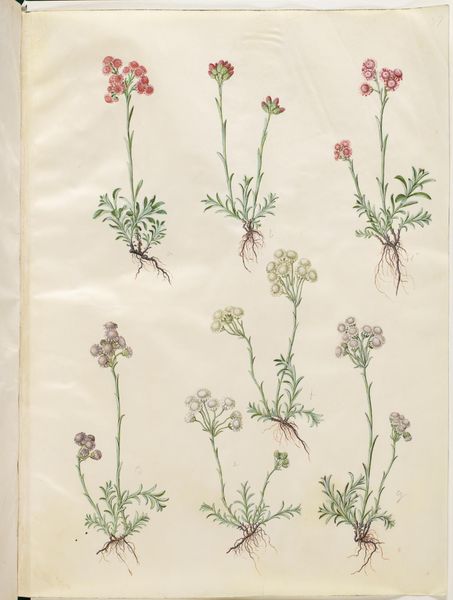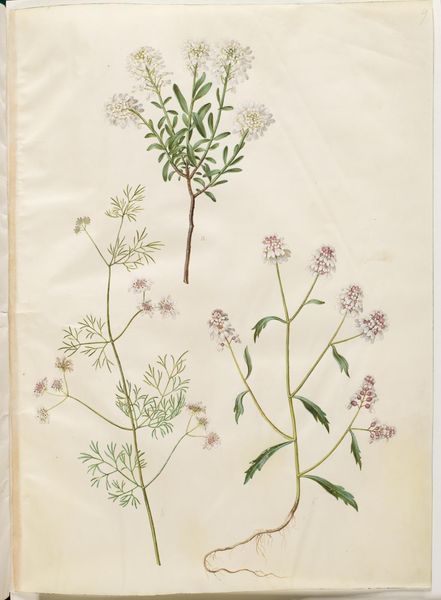
Sempervivum arachnoideum (spindelvæv-husløg); Sedum album (hvid stenurt); Sedum acre (bidende stenurt); Sedum rupestre (bjerg-stenurt); Sedum sexangulare (seksradet stenurt) 1649 - 1659
0:00
0:00
drawing, coloured-pencil, gouache, watercolor
#
drawing
#
coloured-pencil
#
gouache
#
watercolor
#
coloured pencil
#
watercolour illustration
#
early-renaissance
#
botanical art
Dimensions: 505 mm (height) x 385 mm (width) (bladmaal)
This botanical study showing six different types of Sedum plants was made by Hans Simon Holtzbecker in the 17th century. Holtzbecker was working during a time when the natural world was both a source of scientific inquiry and artistic inspiration, as Europe experienced a period of intense exploration and discovery. Holtzbecker’s detailed rendering captures the delicate textures and varied forms of these succulents. His meticulous approach highlights a growing interest in natural sciences and botany, yet we can also consider this within the context of the artist's identity as a craftsman. Holtzbecker, like many artists of his time, occupied a unique position as both an artisan and an interpreter of the natural world, straddling the line between craft and art. These Sedum plants, with their resilience and quiet beauty, reflect the enduring human fascination with the natural world. They invite us to reflect on our place within it, and our relationship to these silent witnesses of history.
Comments
No comments
Be the first to comment and join the conversation on the ultimate creative platform.
